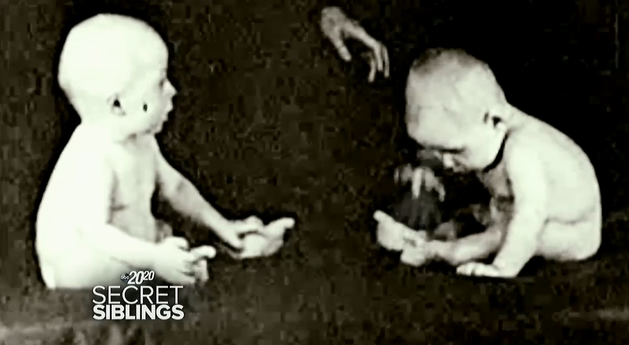Science has led us to remarkable medical breakthroughs and a deeper understanding of our world. But sometimes, the quest for knowledge goes a bit too far, with experiments that are as unsettling as they are curious. Let’s explore a few of the more infamous examples—a powerful reminder that the pursuit of discovery isn’t always straightforward.
6. The Secret of the Separated Siblings

During the 1960s and 70s, scientists were deeply invested in the nature-versus-nurture debate. Dr. Peter Neubauer and Viola Bernard took a bold approach, separating identical twins and triplets at birth to study genetic and environmental impacts on human development—without their knowledge or consent.
One of the most publicized cases involved triplets Eddie, David, and Bobby. Raised in vastly different socioeconomic environments, they still shared surprisingly similar IQs and interests. But the emotional consequences were severe. Eddie’s struggles with mental health led to his tragic death in 1995. The findings from this study are sealed until 2066, leaving many to question the ethical costs of such secretive scientific methods.
5. Wheat to Mice: A Curious Take on Spontaneous Generation

Back in the 1600s, people believed life could spontaneously arise from non-living matter. Scientist Jan Baptista van Helmont attempted to prove this by placing a sweaty shirt and wheat grains in a jar, hoping to see mice after 21 days. His theory, while imaginative, stemmed from flawed observations and ignored actual animal biology.
This bizarre experiment highlighted the trial-and-error stage of scientific knowledge at the time. Not until the 1800s did Louis Pasteur disprove spontaneous generation, proving that life originates only from other life—a moment that shifted scientific perspectives on biology forever.
4. Wilhelm Reich’s Cosmic Cloudbuster

In the 20th century, Wilhelm Reich, a psychoanalyst with unconventional ideas, believed in a cosmic energy he called “orgone,” claiming it affected emotions and weather. He even built a “cloudbuster” device to draw radiation from the atmosphere to combat what he thought were extraterrestrial threats.
His theories, untested and unusual, were met with skepticism, and Reich’s cloudbuster ultimately got him into legal trouble. He was imprisoned for crossing state lines with his inventions, where he eventually died. Reich’s story illustrates the potential dangers of pursuing unverified theories to extreme lengths.
3. Project A119: Bombing the Moon for Power Play

In the heat of the Cold War in 1959, U.S. scientists drafted a startling plan: detonate an atomic bomb on the moon to show off America’s power over the Soviet Union. Project A119 aimed to create a visible explosion from Earth, a visual display intended to strike fear in rivals.
Led by prominent scientists, including Carl Sagan, the project was ultimately scrapped. However, it serves as a reminder of how high-stakes competition can drive even the brightest minds toward unnerving extremes.
2. The Vomit-Drinking Doctor’s Yellow Fever Experiment

In the early 1800s, a medical student named Stubin F sought to prove that yellow fever was not contagious, using an unconventional approach. He ingested and even put the vomit of infected patients into his eyes, hoping to disprove the transmission theory. Unfortunately, he overlooked the real source: mosquitoes.
Despite his unorthodox methods, Stubin F earned his medical degree, underscoring how limited the medical understanding of infectious diseases was at the time. His extreme experiment reminds us of the critical need for informed scientific reasoning.
1. Lysenkoism: When Ideology Warped Science

In Soviet Russia, agronomist Trofim Lysenko rejected Mendelian genetics, instead promoting his own theory, “Lysenkoism,” which claimed environmental changes could directly alter traits. Lysenko’s ideas became policy, leading to harmful agricultural practices and suppression of genetic research.
The aftermath was disastrous—crop failures, famines, and imprisonment for scientists who opposed him. Lysenko’s legacy warns against the risks of prioritizing ideology over established science, showing the severe consequences of ignoring empirical knowledge.




























